Steffen Czolbe
Neuralizer: General Neuroimage Analysis without Re-Training
May 09, 2023



Abstract:Neuroimage processing tasks like segmentation, reconstruction, and registration are central to the study of neuroscience. Robust deep learning strategies and architectures used to solve these tasks are often similar. Yet, when presented with a new task or a dataset with different visual characteristics, practitioners most often need to train a new model, or fine-tune an existing one. This is a time-consuming process that poses a substantial barrier for the thousands of neuroscientists and clinical researchers who often lack the resources or machine-learning expertise to train deep learning models. In practice, this leads to a lack of adoption of deep learning, and neuroscience tools being dominated by classical frameworks. We introduce Neuralizer, a single model that generalizes to previously unseen neuroimaging tasks and modalities without the need for re-training or fine-tuning. Tasks do not have to be known a priori, and generalization happens in a single forward pass during inference. The model can solve processing tasks across multiple image modalities, acquisition methods, and datasets, and generalize to tasks and modalities it has not been trained on. Our experiments on coronal slices show that when few annotated subjects are available, our multi-task network outperforms task-specific baselines without training on the task.
Spot the Difference: Topological Anomaly Detection via Geometric Alignment
Jun 09, 2021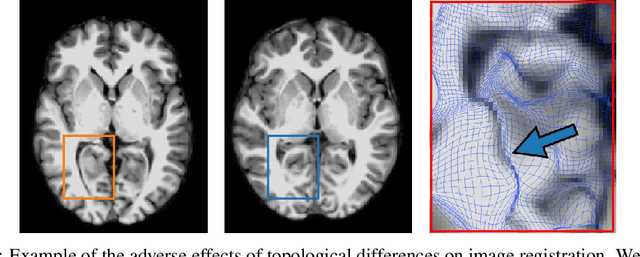

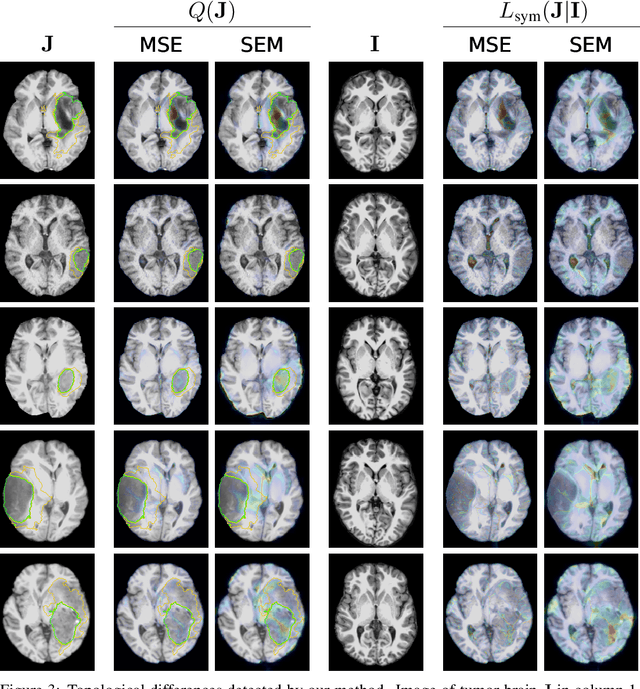

Abstract:Geometric alignment appears in a variety of applications, ranging from domain adaptation, optimal transport, and normalizing flows in machine learning; optical flow and learned augmentation in computer vision and deformable registration within biomedical imaging. A recurring challenge is the alignment of domains whose topology is not the same; a problem that is routinely ignored, potentially introducing bias in downstream analysis. As a first step towards solving such alignment problems, we propose an unsupervised topological difference detection algorithm. The model is based on a conditional variational auto-encoder and detects topological anomalies with regards to a reference alongside the registration step. We consider both a) topological changes in the image under spatial variation and b) unexpected transformations. Our approach is validated on a proxy task of unsupervised anomaly detection in images.
Semantic similarity metrics for learned image registration
Apr 20, 2021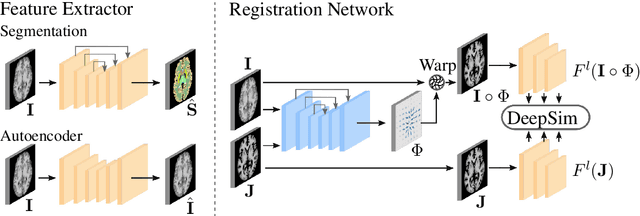
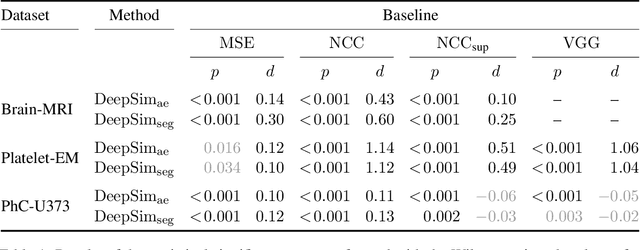
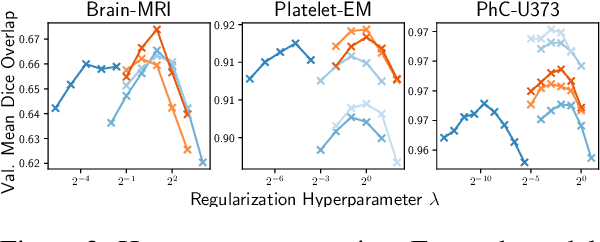
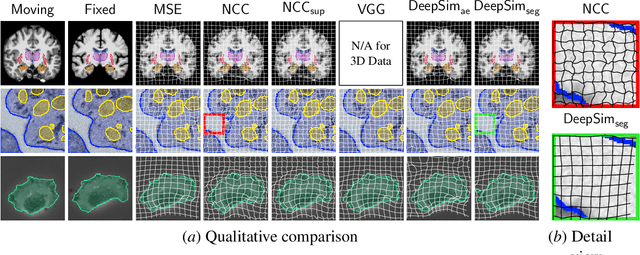
Abstract:We propose a semantic similarity metric for image registration. Existing metrics like Euclidean Distance or Normalized Cross-Correlation focus on aligning intensity values, giving difficulties with low intensity contrast or noise. Our approach learns dataset-specific features that drive the optimization of a learning-based registration model. We train both an unsupervised approach using an auto-encoder, and a semi-supervised approach using supplemental segmentation data to extract semantic features for image registration. Comparing to existing methods across multiple image modalities and applications, we achieve consistently high registration accuracy. A learned invariance to noise gives smoother transformations on low-quality images.
Is segmentation uncertainty useful?
Mar 30, 2021

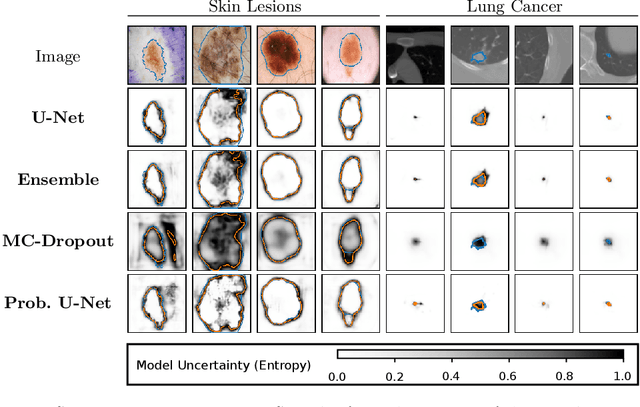
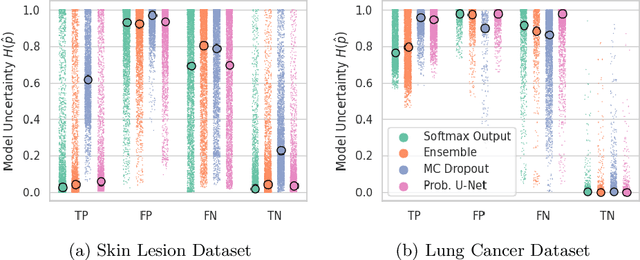
Abstract:Probabilistic image segmentation encodes varying prediction confidence and inherent ambiguity in the segmentation problem. While different probabilistic segmentation models are designed to capture different aspects of segmentation uncertainty and ambiguity, these modelling differences are rarely discussed in the context of applications of uncertainty. We consider two common use cases of segmentation uncertainty, namely assessment of segmentation quality and active learning. We consider four established strategies for probabilistic segmentation, discuss their modelling capabilities, and investigate their performance in these two tasks. We find that for all models and both tasks, returned uncertainty correlates positively with segmentation error, but does not prove to be useful for active learning.
DeepSim: Semantic similarity metrics for learned image registration
Nov 11, 2020
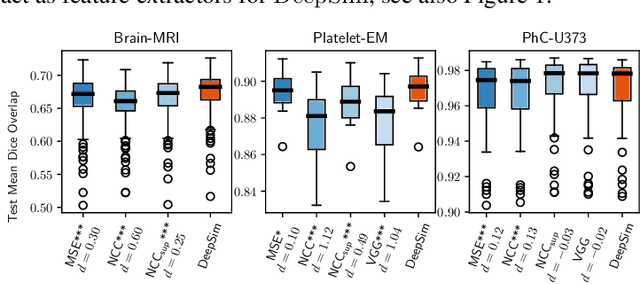
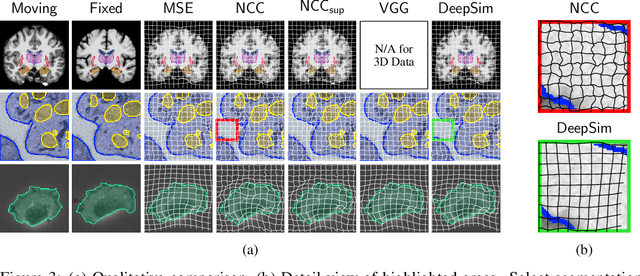
Abstract:We propose a semantic similarity metric for image registration. Existing metrics like euclidean distance or normalized cross-correlation focus on aligning intensity values, giving difficulties with low intensity contrast or noise. Our semantic approach learns dataset-specific features that drive the optimization of a learning-based registration model. Comparing to existing unsupervised and supervised methods across multiple image modalities and applications, we achieve consistently high registration accuracy and faster convergence than state of the art, and the learned invariance to noise gives smoother transformations on low-quality images.
A Loss Function for Generative Neural Networks Based on Watson's Perceptual Model
Jun 26, 2020

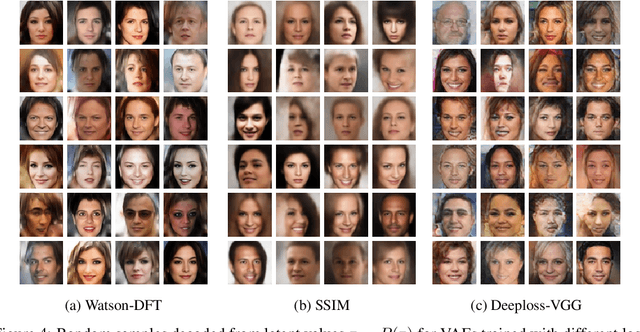
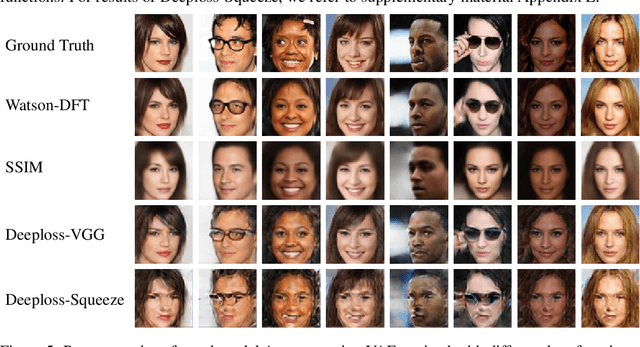
Abstract:To train Variational Autoencoders (VAEs) to generate realistic imagery requires a loss function that reflects human perception of image similarity. We propose such a loss function based on Watson's perceptual model, which computes a weighted distance in frequency space and accounts for luminance and contrast masking. We extend the model to color images, increase its robustness to translation by using the Fourier Transform, remove artifacts due to splitting the image into blocks, and make it differentiable. In experiments, VAEs trained with the new loss function generated realistic, high-quality image samples. Compared to using the Euclidean distance and the Structural Similarity Index, the images were less blurry; compared to deep neural network based losses, the new approach required less computational resources and generated images with less artifacts.
 Add to Chrome
Add to Chrome Add to Firefox
Add to Firefox Add to Edge
Add to Edge